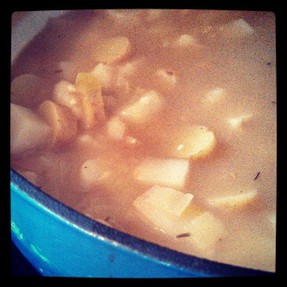 If you buy sunchokes from a grocery store, choose tubers that are firm and fresh. Keep them in the vegetable drawer of your refrigerator until you use them. Wrap them in paper towels to absorb humidity and seal them in a plastic bag. They probably won't keep longer than two weeks, depending on how far they were shipped and how long they were in the store.
If you buy sunchokes from a grocery store, choose tubers that are firm and fresh. Keep them in the vegetable drawer of your refrigerator until you use them. Wrap them in paper towels to absorb humidity and seal them in a plastic bag. They probably won't keep longer than two weeks, depending on how far they were shipped and how long they were in the store.
You don't need to peel sunchokes; the skins are thin. Use a vegetable brush or toothbrush to clean them.
If you plan to use them raw in a salad, don't cut or grate them until just before serving because they'll oxidize quickly and turn dark. If you must cut them early, put lemon juice or vinegar over them.
Like potatoes, sunchokes can be baked, boiled, steamed, fried, stewed, and microwaved.
Don't use aluminum or iron pans. The metals will cause oxidation and turn the vegetable dark.
Sunchokes cook faster than potatoes and can turn to mush if you don't watch them closely. Remove them from the heat as soon as you can easily pierce them with a fork or knife.
Cooked sunchokes should be refrigerated and eaten within a couple of days. High levels of iron may cause stored cooked sunchokes to turn gray, though. Add 1/4 teaspoon of cream of tartar or 1 tablespoon of lemon juice or vinegar to the cooking liquid when reheating.
Acids will strengthen the texture of sunchokes, so if you want them to be softer, add the acidic juice during the last five minutes of cooking.
Don't can or freeze sunchokes because they discolor and their texture gets mushy.
Give sunchokes a try, either raw or cooked.... or both.
photo of sunchoke soup by Anktangle on flickr


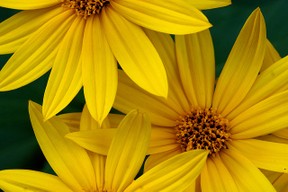
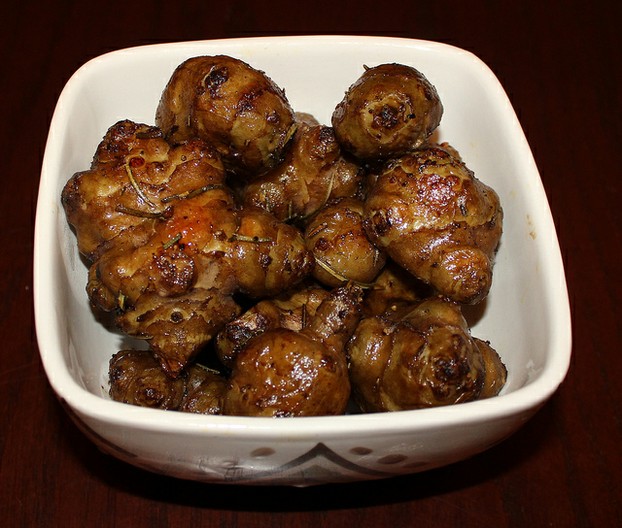
 If you buy sunchokes from a grocery store, choose tubers that are firm and fresh. Keep them in the vegetable drawer of your refrigerator until you use them. Wrap them in paper towels to absorb humidity and seal them in a plastic bag. They probably won't keep longer than two weeks, depending on how far they were shipped and how long they were in the store.
If you buy sunchokes from a grocery store, choose tubers that are firm and fresh. Keep them in the vegetable drawer of your refrigerator until you use them. Wrap them in paper towels to absorb humidity and seal them in a plastic bag. They probably won't keep longer than two weeks, depending on how far they were shipped and how long they were in the store. 




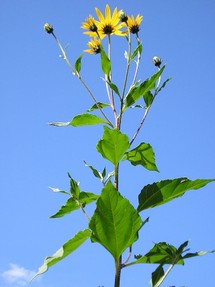
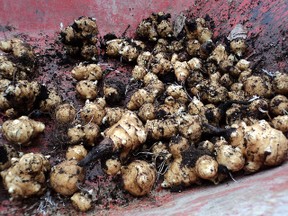
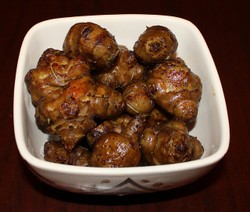

 I Loved to Read in Grade School (in the 1960s)on 09/29/2018
I Loved to Read in Grade School (in the 1960s)on 09/29/2018
 Halloween Memories from the 1960son 09/17/2018
Halloween Memories from the 1960son 09/17/2018
 What on Earth is Earthing?on 06/03/2015
What on Earth is Earthing?on 06/03/2015
 Worm Manure (Castings) Is The Best Organic Fertilizeron 05/25/2015
Worm Manure (Castings) Is The Best Organic Fertilizeron 05/25/2015

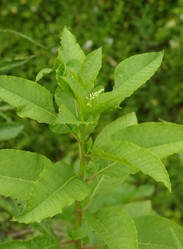
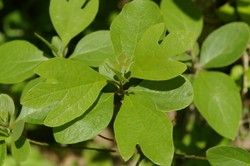
Have You Tried Sunchokes?
We grew sunchokes years ago when we lived on the central coast of California (in our backyard garden). To me, the flavor tasted a bit like sunflower seeds, a bit like potato, but rich and very nice. We ran them along the length of our garden fence and they were easy to grow. Nice article!
jptanabe - you might try planting a few tubers in pots and maybe the groundhogs and rabbits won't eat them. I don't know about the deer - they might eat the greenery when the plant is short, but probably couldn't reach it when the plant is fully grown.
I first tried sunchokes when the CSA I belonged to had them - lots of them! Love the nutty taste. Haven't tried growing them myself yet - the wildlife (deer, groundhogs, rabbits) tend to eat most of what I grow.